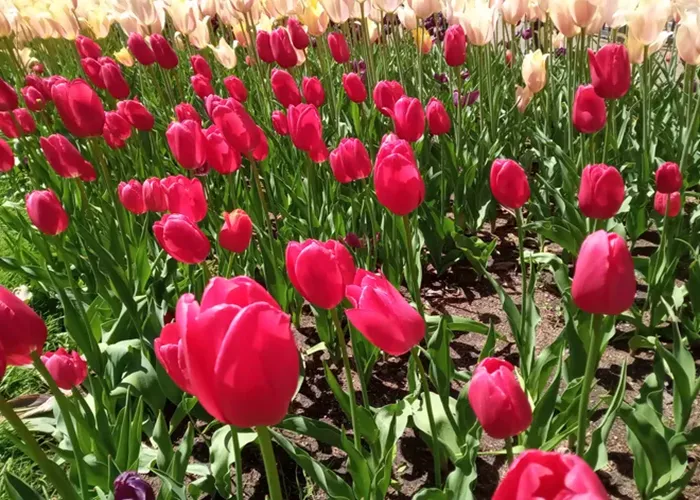Spring flowering bulbs, such as tulips, daffodils, and hyacinths, should be planted from early October through mid-November. Tulips are among the most popular of these bulbs.
Ideally, bulbs should be planted two to four weeks before the soil freezes. In recent years, soil freezing has occurred later in November, providing extra time for planting.
This timing allows bulbs to establish their roots before winter’s cold temperatures arrive. Crocuses, another type of spring flowering bulb, are also best planted in the fall.
While bulbs can be planted in their own beds, an attractive option is to incorporate them into perennial beds. This approach provides early spring color when perennial plants are just beginning to grow. To plant bulbs among perennials, dig a trench about 6 to 8 inches deep around the perennials.
As spring bulbs bloom and then fade, their leaves can be hidden by the emerging foliage of the perennials. It’s essential to keep the leaves on spring bulb plants for as long as possible. This helps the bulbs store energy through photosynthesis before they go dormant later in the spring.
If planting bulbs in their own beds, it’s advisable to mix fertilizer and compost into the soil before planting. A general rule of thumb for planting depth is to place the bulbs at a depth that is twice the size of the bulb, measured from the soil surface to the bulb’s neck.
Bulbs planted too deep may struggle to emerge in spring, while those planted too shallow could be damaged by cold or eaten by animals. Arrange the bulbs in the trench with the root end facing down. Press each bulb into the soil with a half-twist to eliminate any air pockets.
For planting a few bulbs, a small hand-held planter or garden trowel will suffice. For larger quantities, consider using a long-handled step-on planter or a narrow-bladed shovel. In cases where you’re planting dozens or hundreds of bulbs, a drill-powered auger can be very helpful.
These bulb planting augers can be attached to battery-powered drills for convenience. If planting many bulbs, dig the soil to the appropriate depth and set it aside. Then place the bulbs in the dug area and cover them with the removed soil.
For the most visually appealing layout, avoid planting bulbs in straight lines. Instead, use random, flowing patterns. Different types of bulbs can be planted close together for a complementary effect.
Another effective method is to plant bulbs among ground cover, such as periwinkle. The deep green leaves of the ground cover enhance the vibrant colors of the flowering bulbs.
Currently, the selection of bulbs may be limited, as many popular varieties have already sold out. However, you might find some good end-of-season deals.
Most spring bulbs sold in the United States are grown in Holland. Typically, bulb growers begin accepting orders in July. This allows them sufficient time to harvest the right quantities for fall delivery.
To ensure you don’t miss out next year, remember to mark your calendar to order your bulbs next summer.
Related topics:
- South Australian Tomato Farms to Stay in Quarantine for Months
- Scientists Uncover How Plants Create a New Anti-Stress Molecule
- EcoPel Launches Vine Squad to Combat Invasive Plants on Local Streets and Highways


